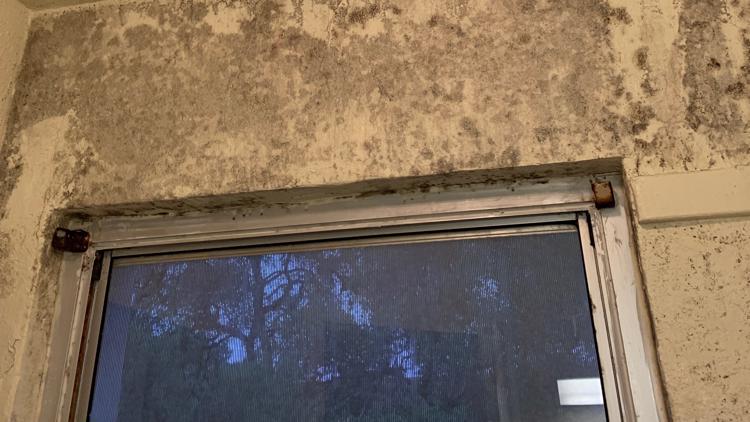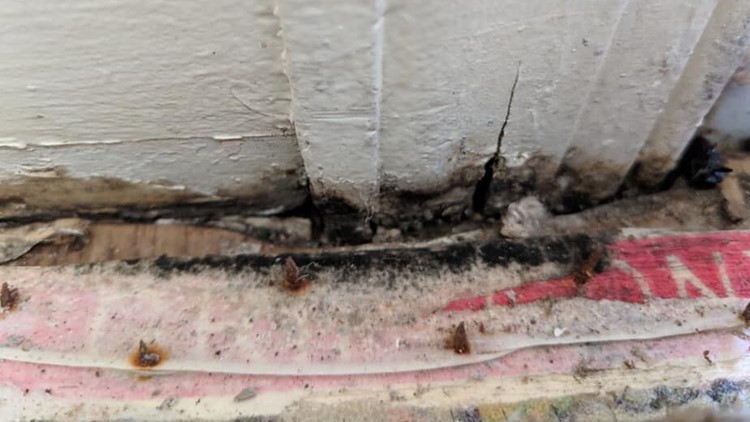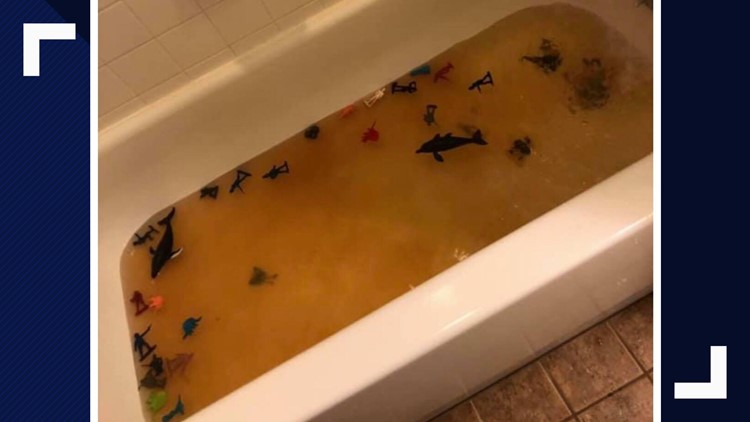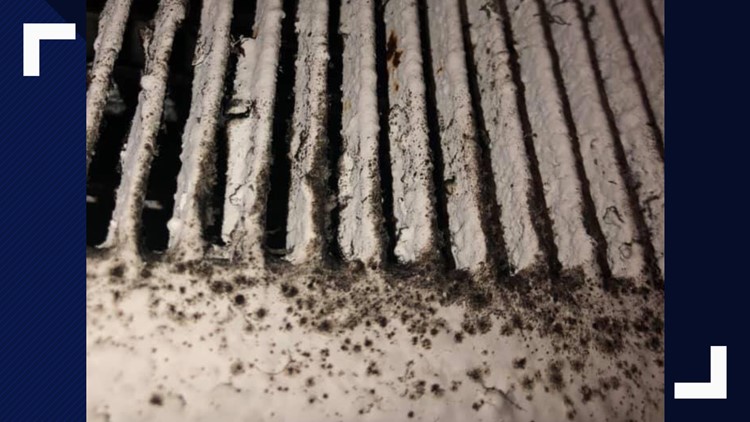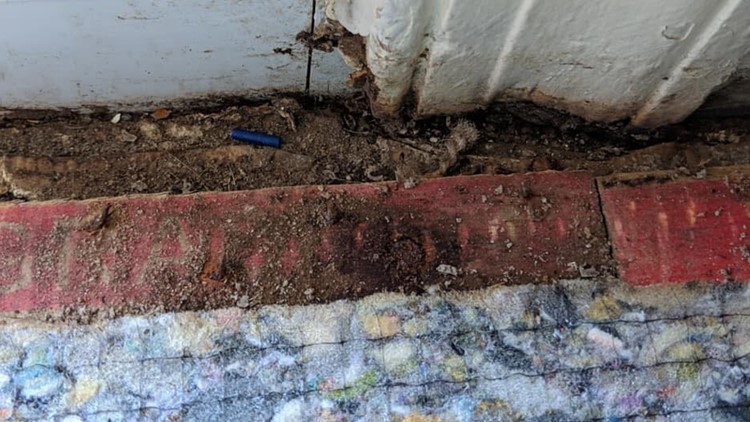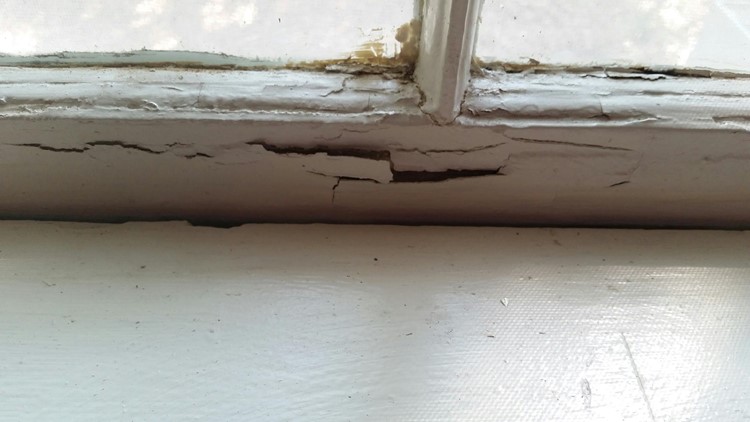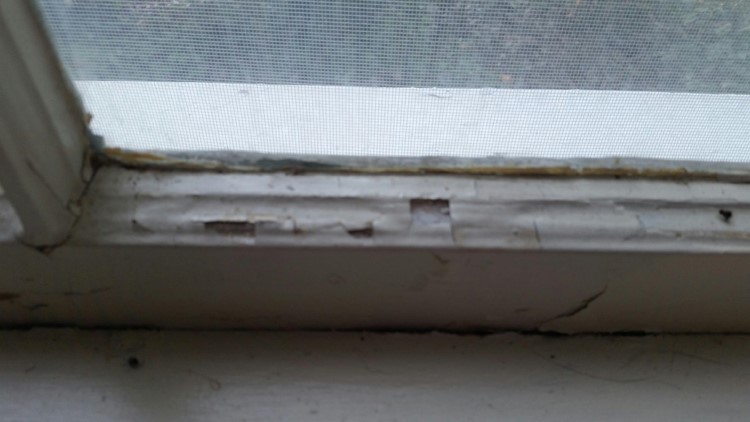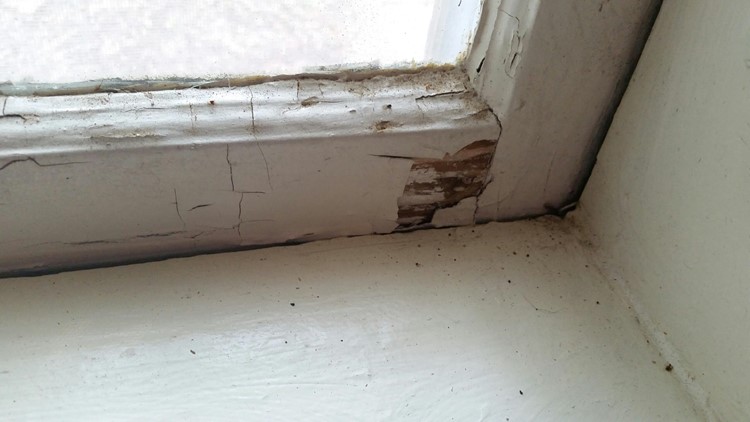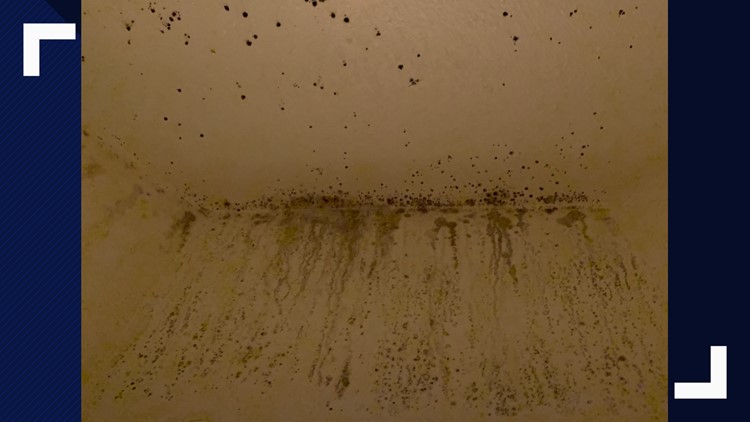WASHINGTON — Photos of the homes of military houses on-base paint an alarming picture: rodents, black mold, brown bathwater, and lead paint.
Families across the United States living on-base are complaining about their quality of life in the provided housing, and it's caused such an uproar, the man who oversees Navy military housing riddled with mold, pests and lead paint is apologizing to families.
Lucian Niemeyer answered tough questions from WUSA9.
“They definitely deserve an apology,” he said. “They don't deserve that. No, they're serving our country.”
Lucian Niemeyer is the Acting Assistant Secretary of the Navy for Energy, Installations and Environment -- that complicated title means he's the guy in charge of housing for the Navy.
Officials now have new information showing the satisfaction rate for homes on Navy bases has gone down. It reinforces stories of the dangerous conditions service members and their families have told WUSA9 for months.
This latest data shows overall resident satisfaction for Navy family housing at a 70.1. For perspective, that's a C-minus. If your kid gets a C-minus in school, you're likely not going to be too happy. But these aren't classroom grades -- this is how people feel about their homes, the place they lay their heads every night, the place they raise their family.
Mold invaded Marine wife Heidi Starr's Quantico home. If she had to choose a grade, she'd give it a "D."
“All over the stud work, the wood, the drywall behind there, the insulation was covered in black,” Starr described. “I want to be able to help my kids, protect myself, protect my health, as well, and know that my kids aren't forced to live in something like that.”
Dangerous military housing living conditions
“We need to work on our quality,” Niemeyer responded. We need to work on our commitment we have to our residents.”
We asked if the overall satisfaction range from 78.6 to 63.4 is good enough.
“It's never good enough,” Niemeyer answered. “I mean, you want to get to 100%. I feel we've got a lot of work to do."
Almost all of military housing is run by private companies. They're called "partners."
“We have some concerns we now need to address immediately,” Niemeyer said. “There's no doubt the goal is to be able to get to a point where there's a collaborative or the restoration of a collaborative open relationship between the partners, the residents and the Department of the Navy.”
The Navy now has some more insight from the people living in base housing. It comes from a new questionnaire they put out, which asked residents for feedback about the houses themselves, property management and maintenance.
Of the 42 installations surveyed, more than half of them got a rating of average or below. Five rated poor or very poor. The overall average decreased from last year.
But right off the bat, the specifics were redacted. Officials wouldn’t say how each specific base did or even which companies had the worst results. So, if a family living on Joint Base Anacostia-Bolling looked at the information, they couldn’t tell which numbers applied to their home.
We asked why.
“We want to offer the partners an opportunity to provide us a corrective action plan,” Niemeyer told us. “Once we get the corrective action plans back from our three partners that are required to deliver them, we definitely will keep the residents educated.”
A month later, they followed through. And now, we have more details. The new report lists the installations in our area.
Dahlgren’s rating is 84.3. Indian Head got a 76.4. and Patuxent River received a 66.8.
We also uncovered getting this info cost $274,757 in taxpayer money.
In the meantime, Niemeyer and other Navy leaders are traveling to bases to hear from the residents themselves. He said almost 40% of the sailors and family members who responded to the survey didn't know they had a local Navy housing advocate.
Now, He's also hoping to hire more housing advocates, who truly speak up for the families, not the private companies.
“I've heard stories in the past when we did have an advocate, maybe that advocate was leaning more towards the support of the partner,” Niemeyer recalled. “We're going to need to fix that, ensure that that resident feels that there's a trust there, that that advocate works on their behalf without any retribution, without any concern about, you know, calls to their command or anything like that. That stuff will stop.”
For Marine wife Heidi Starr, who doesn’t feel that she should worry about her health at home, we asked how the Navy restores trust.
“It's going to take time,” Niemeyer explained. “They're going to have to see 'hey, I've made this request, I've raised this issue, and I'm getting positive results,' as opposed to somebody coming in and saying 'you don't know what you're talking about.'”
This isn't just about the service members and their families. This issue has implications for tax dollars down the road. At the end of the 50-year contracts with the private companies, the military gets the houses back. We asked what happens if the quality is not improved.
“Now you know why I'm staying awake at night,” Niemeyer added. “We need to make sure that the inventory we get back at the end of the fifty years is in much better shape than where we started, so that is something that we have to look at.”
We reached out to the private companies in charge of this housing for the Navy:
“These results are completely unacceptable and we are committed to doing what’s necessary to reverse them as soon as possible,” said Jarl Bliss, President of Lincoln Military Housing, one of the Navy contractors. “In the past several months, Lincoln Military Housing has instituted a series of reforms to improve responsiveness to the families we serve and is working with our Partners at each of the military branches and congress on programmatic reforms as well. We still have more to do, but we’re getting positive feedback from residents and are working hard to regain their trust.”
“We strive to provide our residents with the highest quality living experience, and it is disappointing when we do not measure up to what they expect,”Maureen Omrod, SVP of Marketing and Communications for Balfour Beatty Investments, wrote. “We welcome feedback and take it very seriously. In the last few months, we have taken a number of steps to address the areas where the survey indicates there’s room for improvement, including training our people on best practices and hiring more maintenance and quality control experts.”
We are still waiting for responses from several other private companies, including Hunt, Landmark and Patrician.
This story is one part of an ongoing investigation into military housing conditions in the United States. You can watch previous episodes here:



